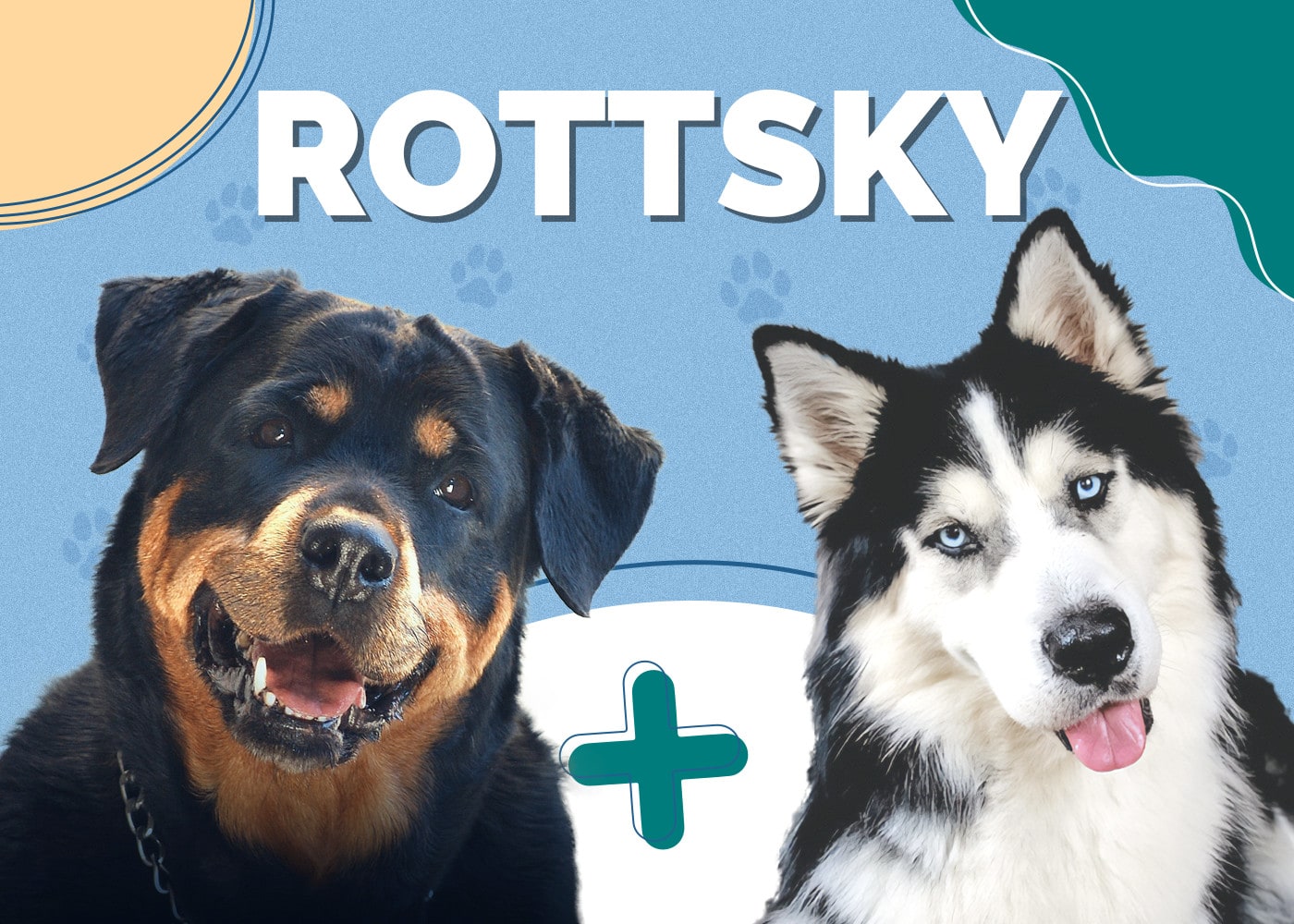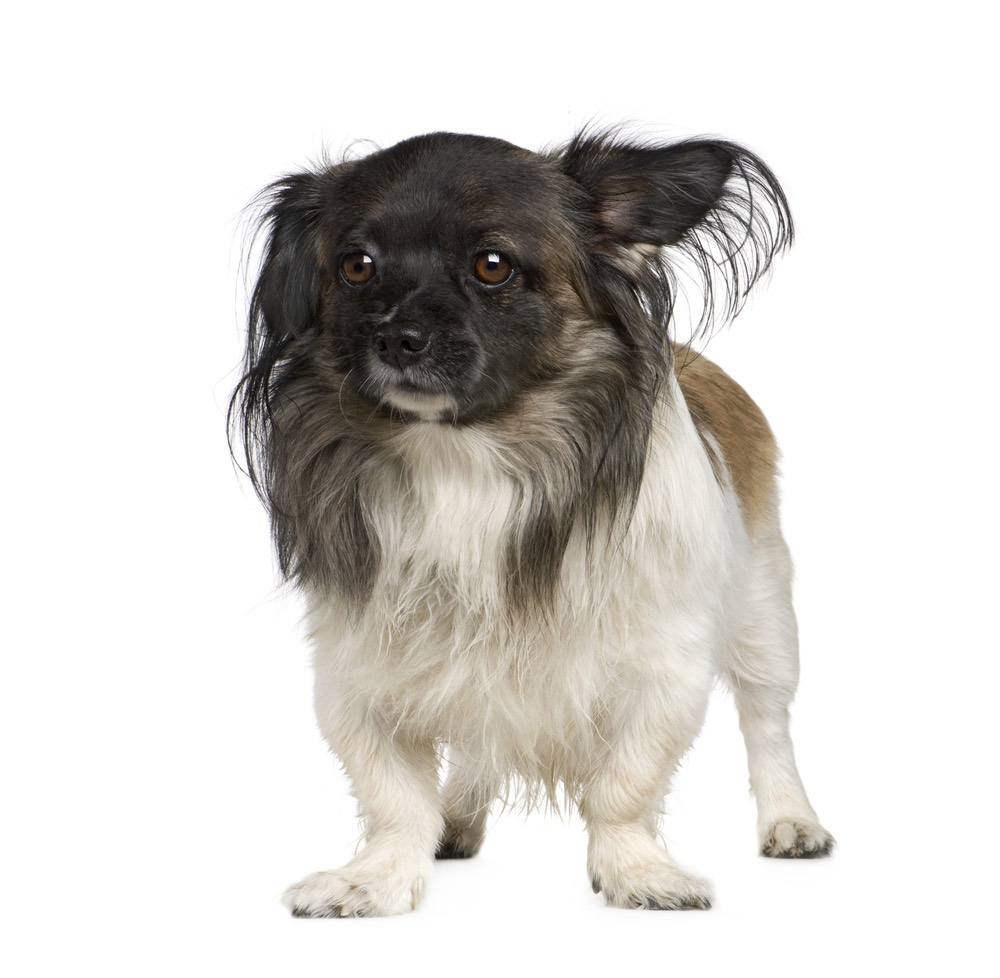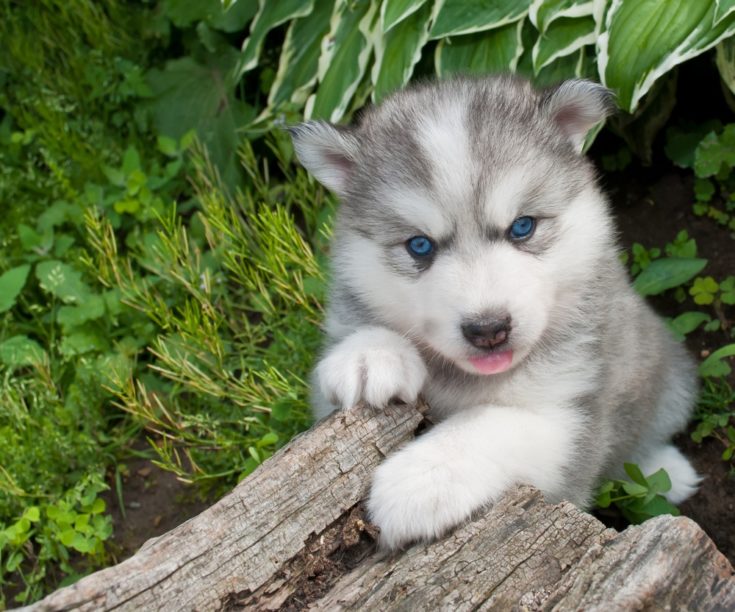10 Dog Breeds With Blue Coats (With Pictures)

Updated on
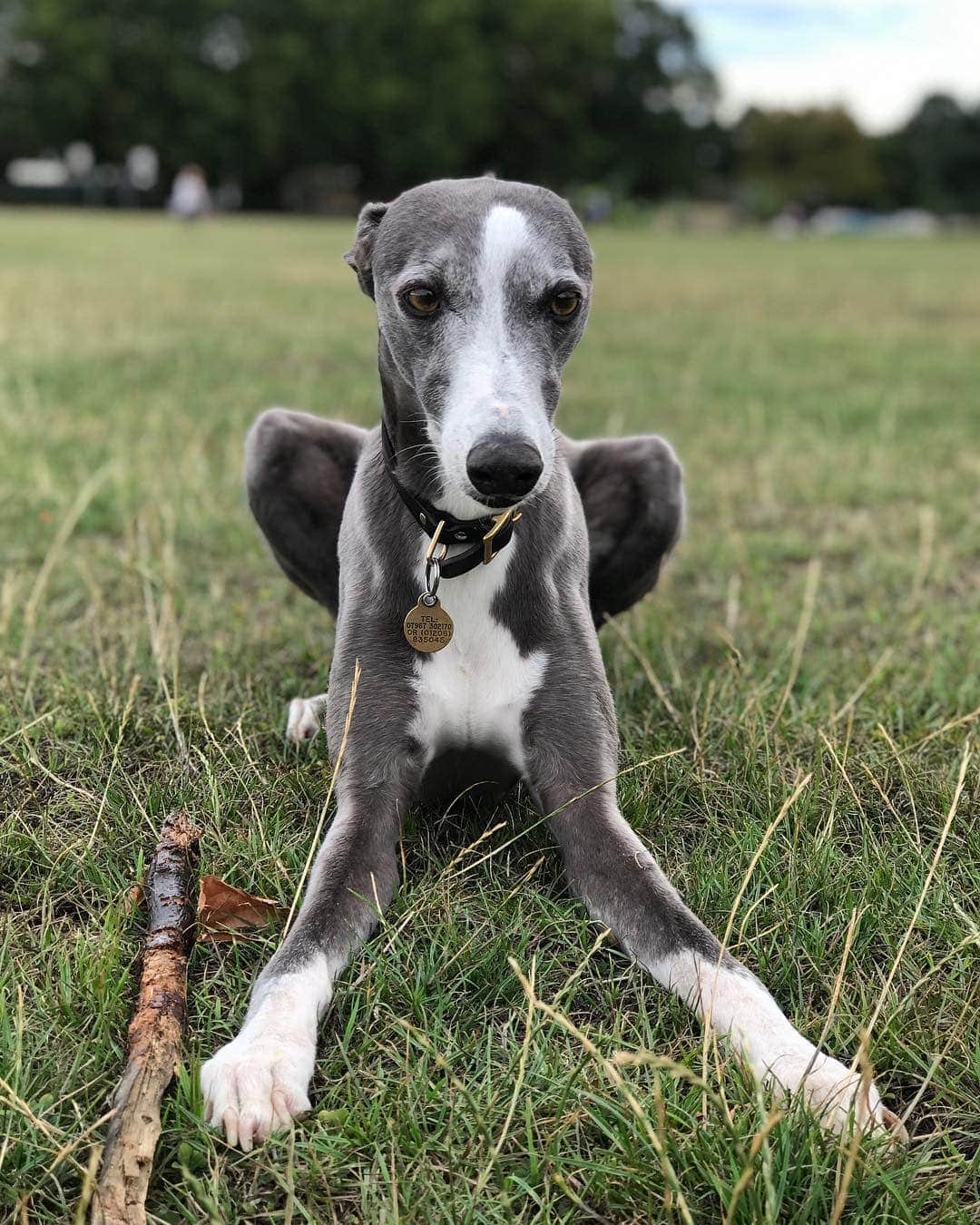
Just like our own hair and skin color are determined by genetics, the same is true for our beloved four-legged friends. Some dog breeds have strong genetics for one or more coat colors while others are a mixed bag. But regardless of breed, blue-coated dogs are some of the most beautiful around.
Blue dog breed coloring is most often caused by a gene that dilutes the natural pigments in their skin and fur. If a dog that would otherwise be black is born with two copies of this dilution gene, it instead turns a gorgeous slate grey.
While most—maybe even all—dog breeds carry this dilution gene to some extent, it is far more common in some than in others. Here are some of the breeds you’re most likely to find with a blue coat:
The 10 Most Common Dog Breeds with Blue Coats
1. Australian Cattle Dog
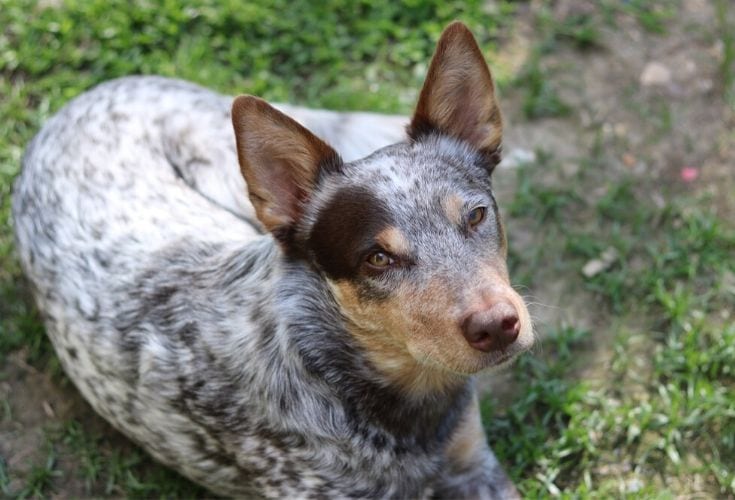
Height
17–20 inches
Weight
25–50 pounds
Lifespan
12–16 years
Because of its coloring, the Australian Cattle Dog often goes by the name “Blue Heeler.” This dog is closely related to Australia’s wild Dingo—in fact, it is the only domesticated breed related to the species.
Raised for herding livestock, the Australian Cattle Dog is quick-witted and athletic. The breed excels at canine sports, especially agility and herding. If structured sports aren’t an option, this dog also serves as an excellent running or hiking companion.
2. Kerry Blue Terrier
Height
17.5–19.5 inches
Weight
30–40 pounds
Lifespan
12–15 years
The Kerry Blue Terrier is a large Irish breed that, as the name suggests, almost exclusively bears a blue coat. Its long legs and bearded face are distinctly Terrier, while its muscular body is covered in super-soft, curled fur.
Despite the thick fur covering its body, the Kerry Blue Terrier does not naturally shed. Instead, owners must regularly brush and comb this dog’s coat to prevent tangles. This breed needs to be kept busy both physically and mentally to prevent unwanted behaviors from cropping up.
3. Blue Lacy
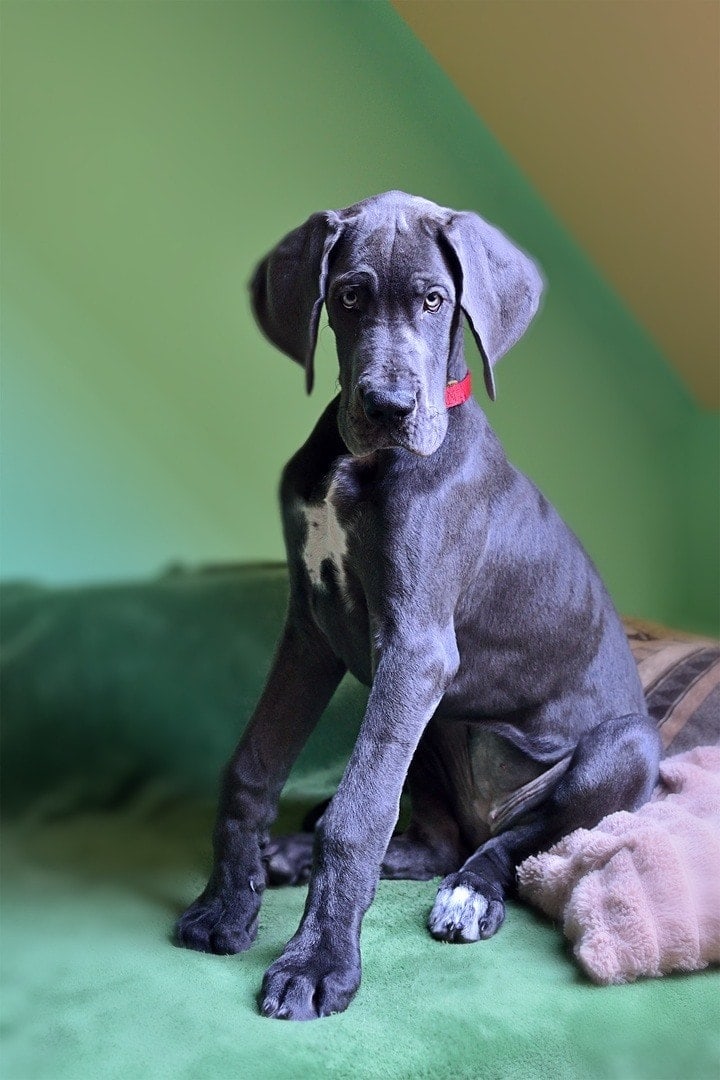
Height
17–25 inches
Weight
25–50 pounds
Lifespan
12–16 years
While the Blue Lacy isn’t recognized by large organizations like the American Kennel Club, this Texan breed definitely deserves a place on our list. After all, the blue coat is so important to this breed’s standard that it’s in the name.
The Blue Lacy is high-energy and playful, though it tends to shine around loved ones rather than in the company of strangers. This intelligent breed learns quickly, but its energy needs and intense personality mean inexperienced dog owners should steer clear.
4. Australian Shepherd
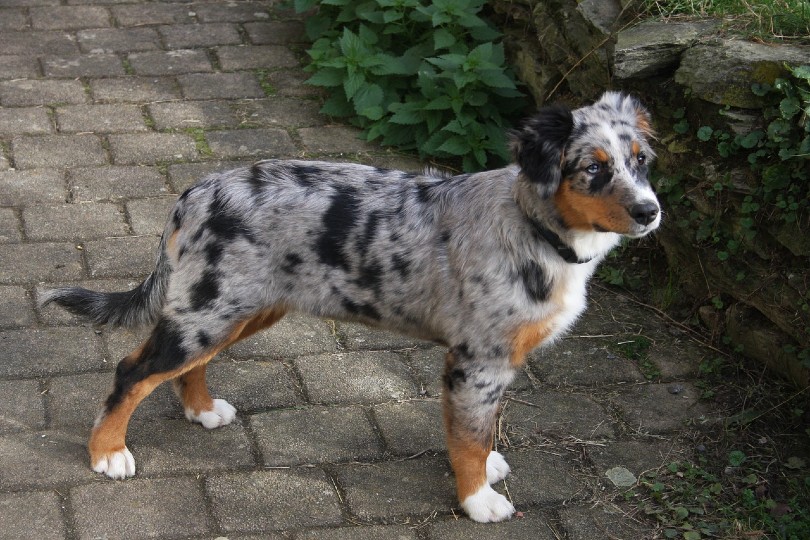
Height
20–23 inches
Weight
40–65 pounds
Lifespan
12–15 year
The Australian Shepherd comes in many different coat colors, but blue is one of the most common. Rather than a solid blue coat, however, the Australian Shepherd tends to have a spotted coat caused by the merle gene. It’s also quite common for this breed to have a blue coat with patches of other colors.
This breed was developed on United States ranches and still makes regular appearances in rodeos nationwide. As long as its energy needs are met through participating in canine sports or similar activities, this breed can make an excellent companion.
5. Italian Greyhound

Height
13–15 inches
Weight
7–14 pounds
Lifespan
14–15 years
The Italian Greyhound displays the best traits of any lapdog, offering entertainment, companionship, and affection. This blue dog breed is nearly identical to the standard Greyhound, just smaller and more slender. Italian Greyhounds come in a range of colors, but blue is incredibly common.
As with any sighthound, the Italian Greyhound possesses an extremely high prey drive. This dog will chase after anything and everything it deems to be prey without much thought. While it is clingy with its favorite humans, the breed doesn’t think much of strangers.
6. Chow Chow
Height
17–20 inches
Weight
45–70 pounds
Lifespan
8–12 years
When it comes to the Chow Chow, most of us picture a golden, lion-hued dog. But this breed comes in a handful of different colors, including blue. While blue-coated Chow Chows are nowhere near as common as their golden counterparts, they are remarkably beautiful.
This Chinese dog is known for its stubborn and aloof personality. While almost any dog can be trained with patience and consistency, the Chow Chow is far from the best option for inexperienced owners.
7. Irish Wolfhound
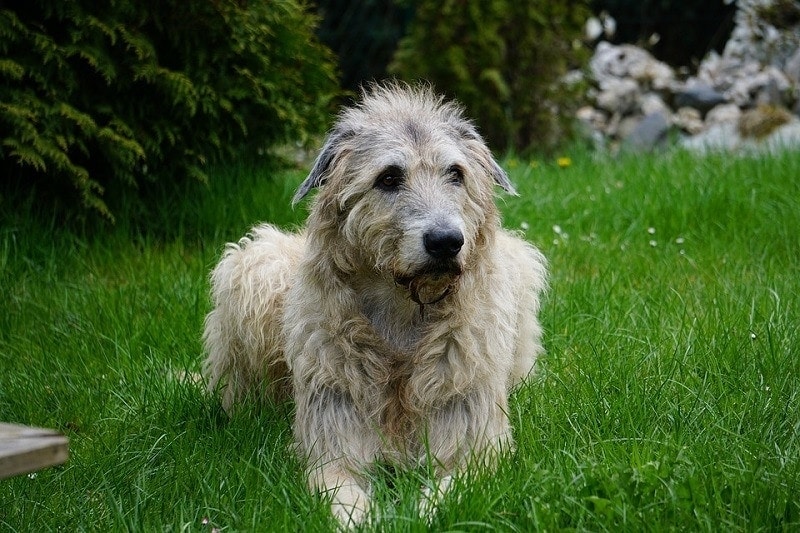
Height
30–32 inches and up
Weight
105–120 pounds
Lifespan
6–8 years
The Irish Wolfhound might look like a creature belonging in a storybook, but it is very much a real dog breed. This canine is very tall, towering over even the Great Dane, and its shaggy fur is usually (but not always) blue. Although this blue dog breed’s name comes from its days of taking down wild wolves, it makes a sweet and loving household companion.
The Irish Wolfhound is related to Greyhounds, and it has the agility to prove it. Despite its size, this dog won’t do much to guard property or livestock—its personality is too calm. However, few ill-willed individuals would choose to cross paths with this gentle giant.
8. Whippet
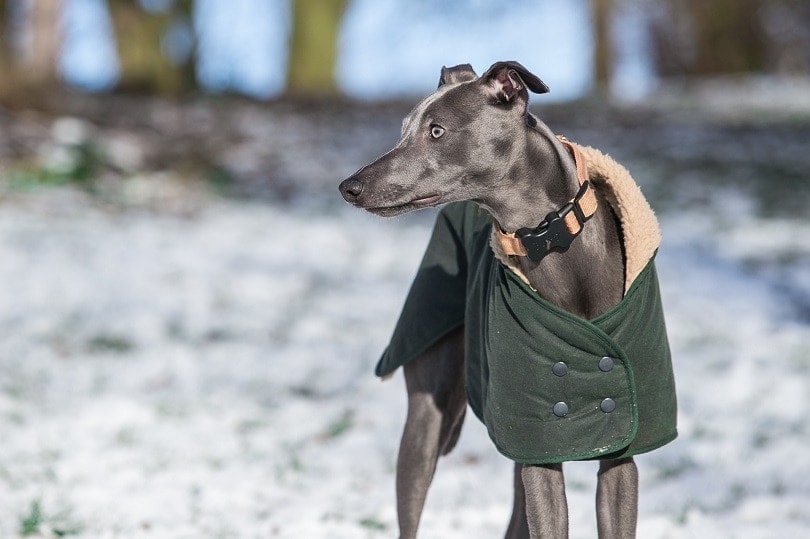
Height
18–22 inches
Weight
25–40 pounds
Lifespan
12–15 years
Often mistaken for a standard Greyhound, the Whippet is actually a bit smaller. It still displays the classic build of a sighthound, along with the intense agility and high prey drive. Though the breed is smart, these dogs generally like to do their own thing.
While Whippets are capable of incredible feats of speed, most prefer lounging around the house over running circles in the yard. Yes, they can run fast, but only when it’s worth their time and energy. This breed thrives on companionship and must be given plenty of attention throughout the day.
9. Thai Ridgeback
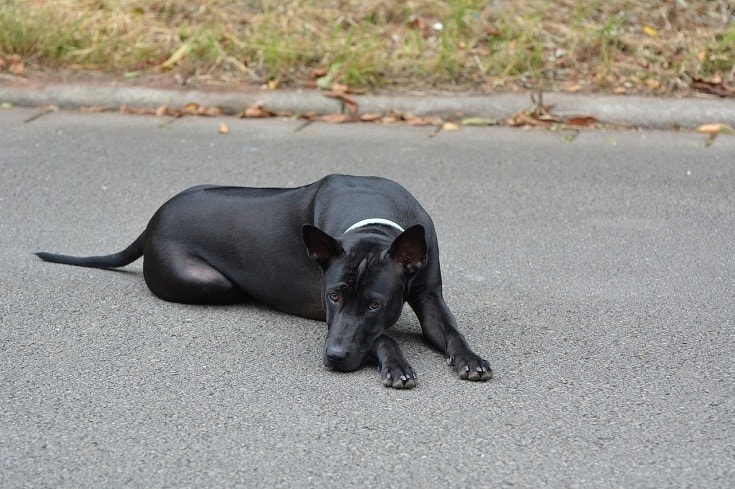
Height
20–24 inches
Weight
35–75 pounds
Lifespan
12–13 years
The Thai Ridgeback isn’t commonly seen in the United States, but it is an impressive breed. As far as looks go, this dog is sleek, carries itself well, and is quite muscular. While you can find the Thai Ridgeback in many colors, blue is the most striking.
This breed is a natural athlete with the perfect combination of speed, strength, and jumping capability. Its namesake, the hairy ridge down the back, can come in eight distinct patterns. Some members of the breed are born without a ridge at all.
10. Great Dane
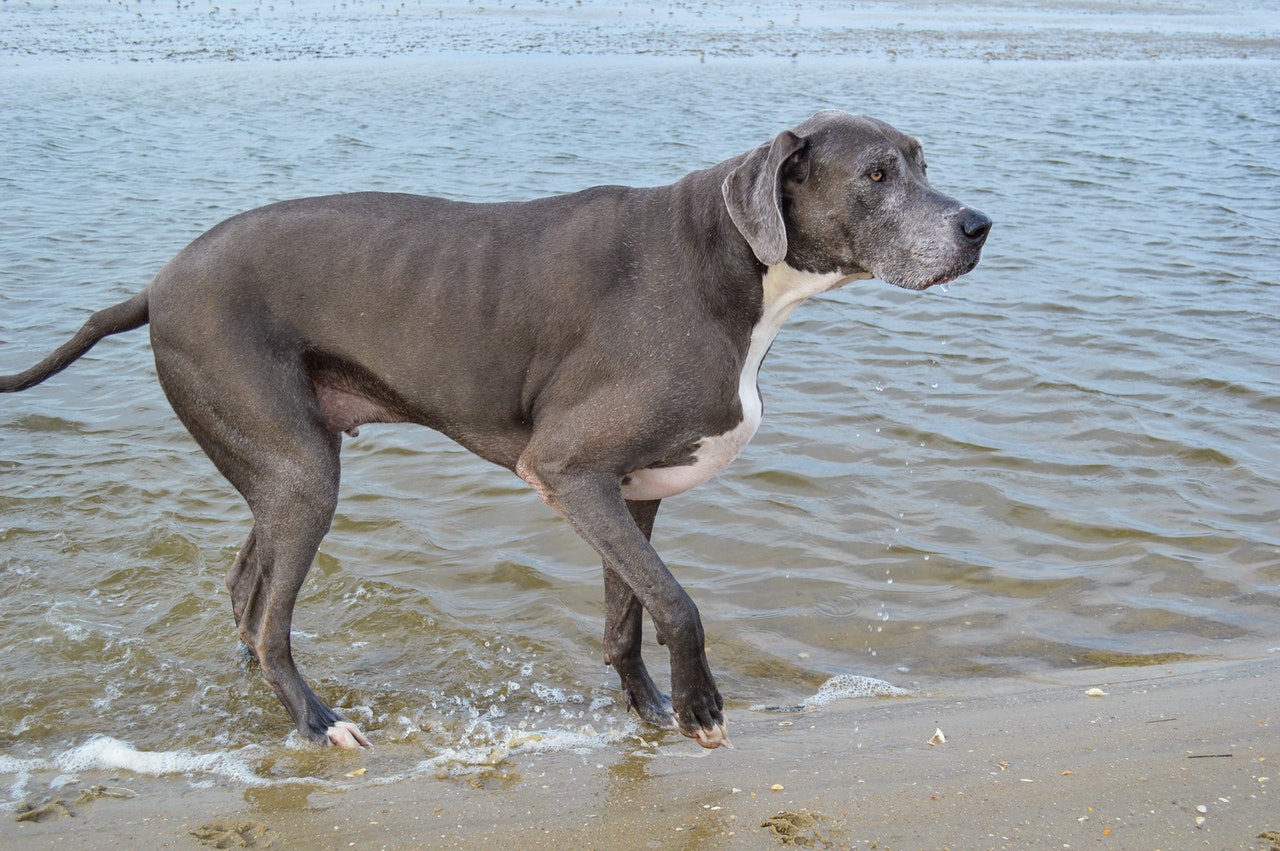
Height
28–32 inches
Weight
110–175 pounds
Lifespan
7–10 years
The Great Dane comes in a wide range of colors and patterns, including Harlequin, Brindle, and Merle. Of course, this dog breed wouldn’t be on our list if it didn’t also come in blue.
Known for its enormous size and penchant for solving not-so-supernatural mysteries, this dog towers over many adult humans when perched on its back legs. While the Great Dane makes an excellent guard dog, it is overall sweet and gentle among family.
Conclusion
As we said, the gene that causes blue coloration in dogs is present in almost all breeds. You can find blue Labrador Retrievers, German Shepherds, Pomeranians, and more. Many mutts also present with blue fur, depending on their parents’ breeds and genetics.
While blue coats are beautiful, it’s also important to look at the big picture. The gene that causes blue coloration can also cause some skin conditions, like alopecia. If you decide to bring home a blue-colored dog, be sure to do your research on potential health issues they may encounter.
So, which of these blue dog breeds is your favorite? Let us know in the comments below!
See also:

